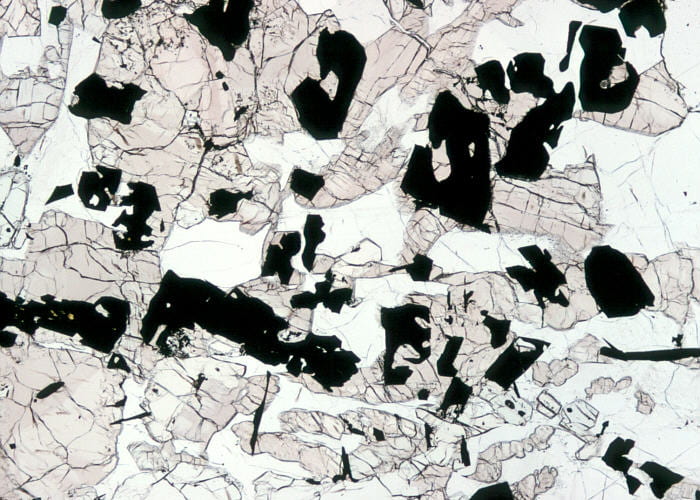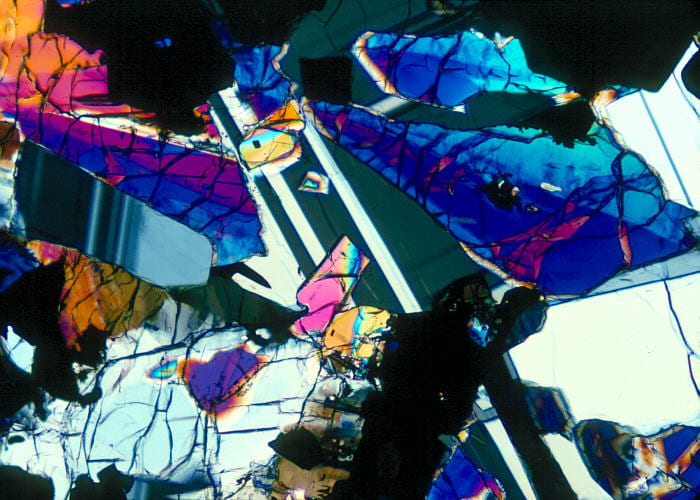Lunar Thin Section 70017
This high-Ti basalt is typical of the older mare lavas. High-Ti lavas (9 to 13% TiO2) are generally confined to the period 3.85 to 3.55 Ga, whereas the low-Ti lavas (1 to 5% TiO2) are most common in the period 3.45-3.15 Ga (Meyer, 1987). The high-Ti basalts are thought to have been derived from olivine-pyroxene-ilmenite cumulates that formed during crystallization of the magma ocean. This basalt was collected from the Taurus-Littrow Valley area, in a range of mountains between Mare Serenetatis and Mare Tranquillitatis, by the Apollo 17 mission. This sample was dated at ~3.70 Ga.
|
|
This rock contains abundant pyroxene, plagioclase, and Fe-Ti oxides that include ilmenite, ulvöspinel, and armalcolite. There is minor olivine. This shows large pyroxene and plagioclase crystals, with opaques scattered throughout. In cross-polarized light the pyroxenes are color-zoned, generally indicating augite cores and pigeonite rims. Field width is 8 mm.
Views in plane and cross-polarized light.
|
|
|
The grain in the center is olivine, which is euhedral against plagioclase but not against pyroxene, typical in this sample. A few other colorless olivine grains are visible, though they are identified better in the image below. In cross-polarized light, olivine crystals can be seen at the far left center (orange), center (yellow), and several small crystals toward the lower right (pale-pink). Field width is 4 mm.
Views in plane and cross-polarized light.
|
|
|
Close-up of the principal minerals, including euhedral olivine in plagioclase (center) and anhedral olivine in augite (center of the lower left quadrant). The olivine crystals are more easily distinguished from pyroxene in the cross-polarized light view. Field width is 1.6 mm.
Views in plane and cross-polarized light.
|
 |
In the center is a rather large grain of troilite, with unmixed iron droplets. The pinkish-gray minerals to the left and right are ulvöspinel, containing ilmenite exsolution lamellae. Field width is 0.32 mm. |







